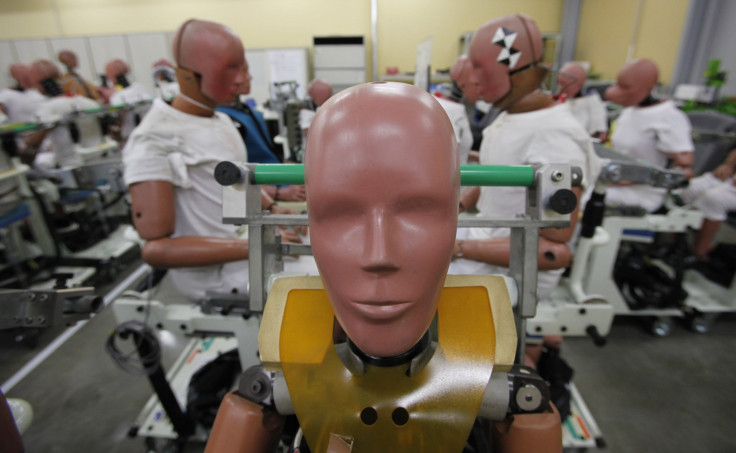Obese Crash Test Dummies Bring Automotive Safety Into Modern Age

Not even inanimate humans can avoid succumbing to the obesity epidemic, apparently, as the world’s largest crash test dummy manufacturer has announced its plans to roll out overweight versions of the popular safety martyr.
Americans have steadily been getting fatter each decade since the middle of the 20th century. In 1960, the average man and woman weighed 166 pounds and 140 pounds, respectively. Since then, the averages have risen by 29 pounds and 26 pounds. But the crash test dummy meant to represent them, like its cousin, the department store mannequin, hasn’t seen any major changes since it was first produced in 1949, and it’s putting us at risk.
Humanetics wants to change that. The company has been honing the crash test dummy since the 1950s, but its look hasn’t changed much. Humanetics makes child- and baby-sized dummies, for example, but they’re merely smaller versions of the adult. There are no alternatives to account for the added risks of being larger or older.
Chris O’ Connor, the company’s CEO, says the need for new, smarter dummies really comes from a new type of car accident. “Obese people are 78 percent more likely to die in a crash,” O’ Connor told CNN. “The reason is the way we get fat. We get fat in our middle range. And we get out of position in a typical seat.”
A prototype of the obese dummy is currently being developed. It weighs in at 273 pounds and carries a body mass index (BMI) of 35, putting him squarely in the Obese category according to the National Institutes of Health. A healthy BMI falls between 18.5 and 24.9.
The new dummies come equipped with up to 130 information channels, O’Connor adds, which can offer incredibly precise points of data. Experts can look at a controlled crash or a computer model and see immediately where the body absorbs the greatest forces, track how much damage is done, and predict whether any of the passengers will survive. In a simulation they can add layers of subcutaneous fat to the dummy’s midsection or legs, so they can see how weight distribution affects the risk of death.
"The way the industry is going is more toward computational modelling,” Dr. Joel Stitzel, director of the Center for Injury Biomechanics, told CNN. And obese dummies aren’t the only ones the new models will see. There’s also talk of elderly dummies, given that older drivers aren’t just more likely to get in an accident, but suffer greater injuries when they do. Humanetics’s main challenge in replicating these effects is accounting for the sliding scale of age. After all, a 50-year-old faces more risks than a 20-year-old, but an 85-year-old faces even more still.
“Both of them have a higher rate of injury or death,” O’Connor said. “And as a result of that, we have to look at how we protect those types of people, because they’re still driving cars.”



























